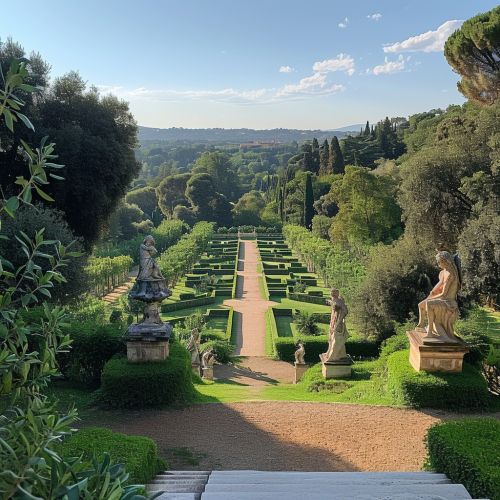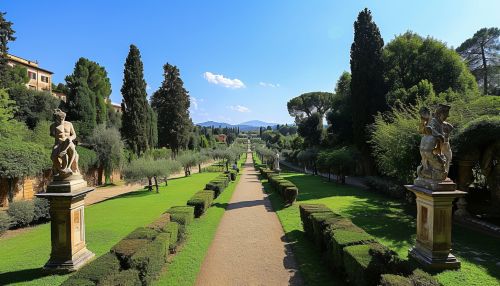Boboli Gardens
History
The Boboli Gardens, located in Florence, Italy, are a historical park dating back to the 16th century. Originally designed for the Medici family, the gardens are an outstanding example of "green architecture" decorated with a collection of sculptures and ancient artifacts. The garden, which covers an area of about 45,000 square meters, is a mix of styles, ranging from the Italian Renaissance to the romantic woods of the 19th century, and represents one of the first and most important examples of the "Italian Garden".


Layout and Design
The layout of the Boboli Gardens is a perfect example of the Italian garden, which is organized in a geometric and rational way. The garden is divided into several sections, each with its own unique characteristics and attractions. The main axis, which starts from the palace, climbs the hill with a long perspective stretch, divided into two symmetrical parts by the Viottolone. The gardens are enriched by a series of fountains, grottos, and garden temples that enhance the landscape design.
Notable Features
Among the notable features of the Boboli Gardens are the Amphitheater, the Garden of the Cavalier, the Kaffeehaus, the Lemon House, and the Knight’s Garden. The Amphitheater is located at the center of the garden and is used for concerts and performances. The Garden of the Cavalier houses the Porcelain Museum, while the Kaffeehaus, an 18th-century greenhouse, is a fine example of Rococo architecture. The Lemon House is home to a collection of citrus plants, and the Knight’s Garden is a secluded area with a large collection of roses.
Art and Sculptures
The Boboli Gardens are home to a vast collection of sculptures, ranging from Roman antiquities to Renaissance works and 17th-century statues. Among the most notable are the Fountain of Neptune, the Fountain of the Ocean, and the statues of Paris and Helen by Vincenzo de' Rossi. The garden also hosts temporary exhibitions of contemporary art.
Flora and Fauna
The Boboli Gardens are home to a wide variety of plants and trees, including several ancient specimens. The garden is also home to a number of bird species, making it a favorite spot for birdwatchers.
Influence
The design of the Boboli Gardens has had a profound influence on many European court gardens, particularly in France, where it served as a model for the Gardens of Versailles.
